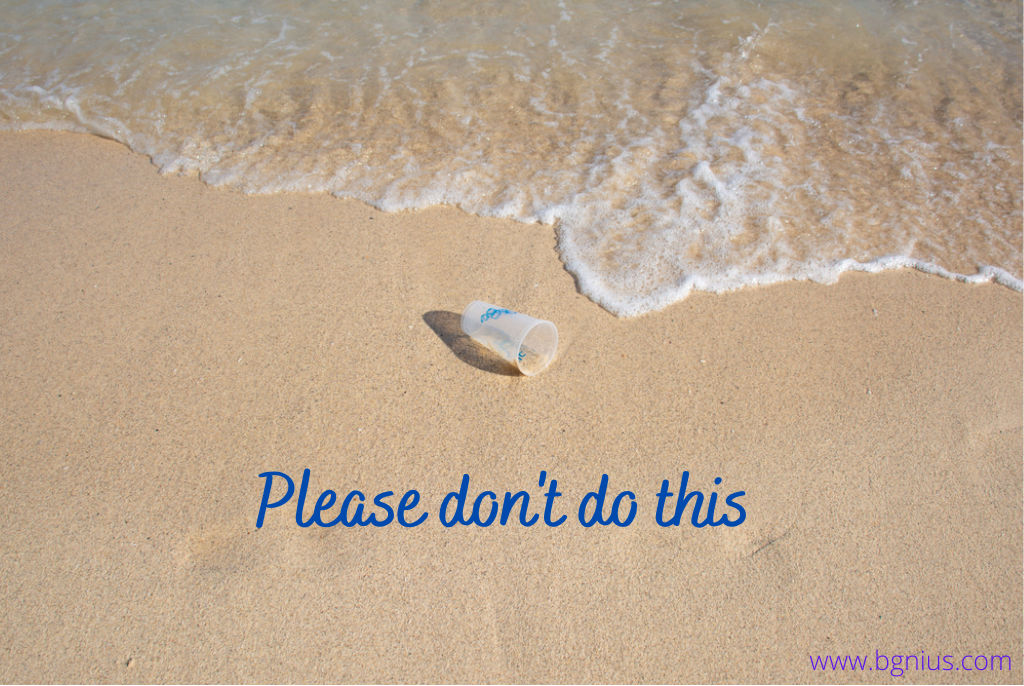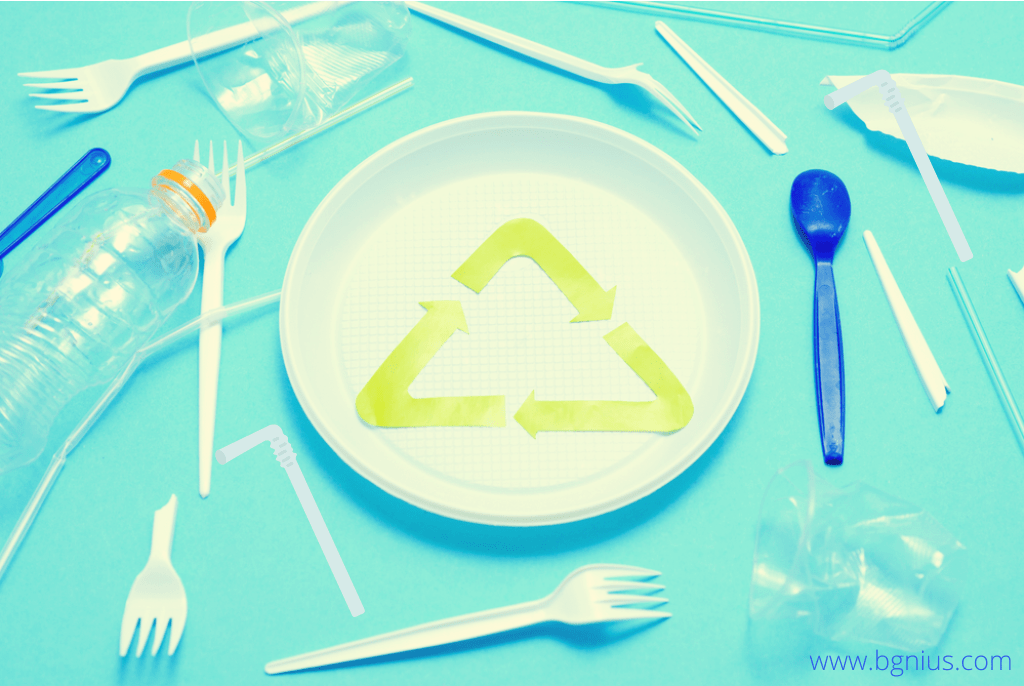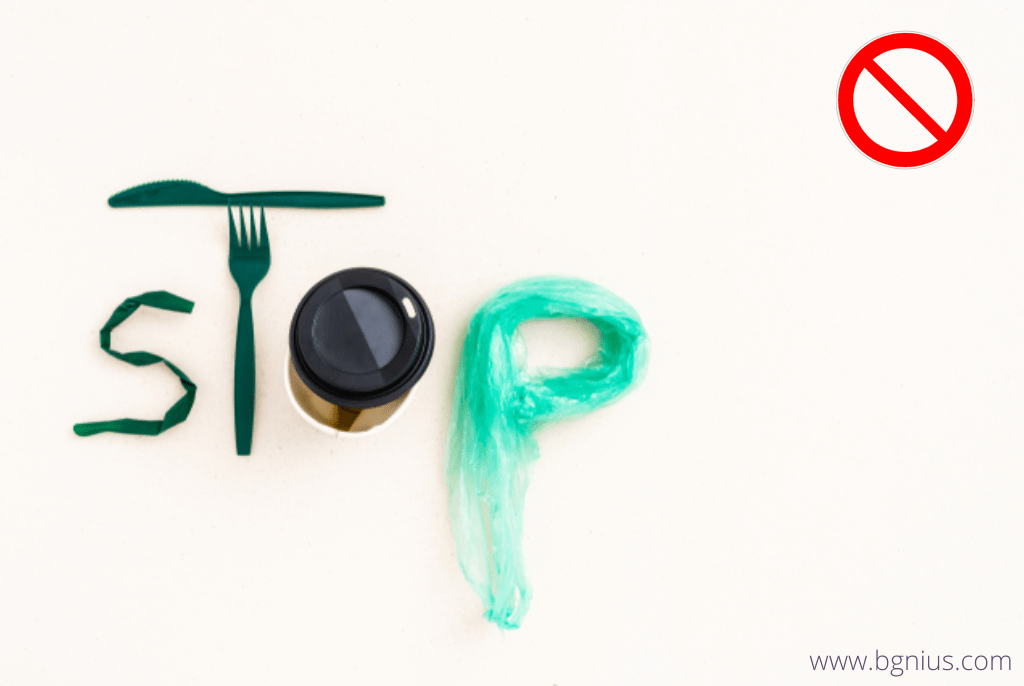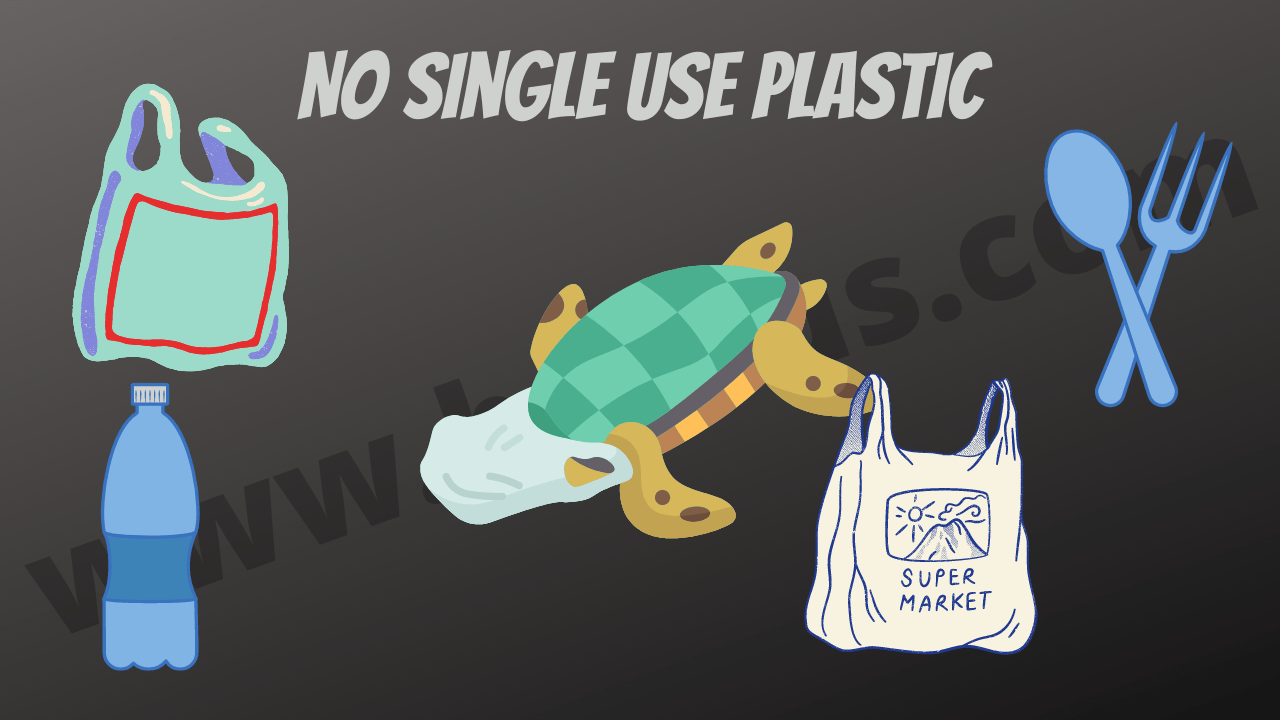Single-Use Plastic Ban: What Changes From July 1? Check Banned Items, Penalty Amount, and Other Details Here
- 0 Comments
- 402 Views
You may have been informed by news and television that the Center has announced a ban on single-use plastics from July 1 this year and has defined a list of items that will be banned, so we will understand here why single-use plastics. What is the reason for the ban? And what items are banned. The list announcing the ban states in a notification from the Ministry of Environment that the manufacturer imports stockings, distributes sales and the use of single used plastic commodities, including polystyrene and expanded polystyrene, will be banned from 1 July 2022. Single-use plastics are plastic items that are used once and discarded, meaning they are never used again. And these items make up the largest share of the plastic manufactured and used band. People such as cups, glasses, cutlery wrapping around spoons, knives, straws, trays, sweet boxes or film packing s invitation cards and cigarette packets plastic or PVC banners less than 100 microns as a stirrer band single single-use plastic items according to the notification center The phase-out of single-use plastics has been announced as part of the board’s comprehensive action. Plans to reduce the supply of raw materials by reducing the demand for plastics and to enable measures to promote single-use plastic alternatives will be overseen by the Central Pollution Control Board by the Central and State Pollution Control Boards. Which will report to the center regularly. Because now it is necessary to take care not to damage the environmental factors.
Single-Use Plastic Items
STRAWS
PAPER PLATES & CUPS
PLASTIC SPOONS & FORKS
DISPOSABLE & DIAPERS
BOTTLED MINERAL WATER
PLASTIC & POLYPROPYLENE BAGS
PLASTIC SHRINK WRAP
SINGLE-USE SACHETS
Examples of single-use plastics
Single use plastic bans –STRAWS
The plastic straw is one of the leading contributors to marine pollution, with more than 500 million being dumped daily in the U.S. Point six straws per person which translates to one hundred and seventy billion straws per year by the year 2050 will have more plastic than fish in the ocean and straws are a big reason because most plastic straws weigh too little to recycle. When recyclable items enter a facility they pass through a series of conveyor belts and mechanical sorting screens from plastic and so much more straw although too small to separate they either contaminate the recycling load or end up in the landfill and at that time It takes 500 years for a straw to decompose at a time when plastic pollutants can potentially leak into soil and water. An estimated eight million metric tons of plastic go into our oceans each year and it has a negative impact on wildlife for other small pieces of plastic they break down over time which is called microplastics are basically less than five pieces of plastic. The length of millimeters they are dangerous to wildlife because they can be like food and they leach harmful chemicals, small pieces can obstruct the digestive system of animals and potentially kill them and if that is not enough to shake your head a study Says a quarter of all fish now have plastic pollock and any microplastics next to the plastic move and get trapped in the ocean currents, have you heard d in the Great Pacific Garbage Patch is less than that patch and the soup in the North Pacific Ocean is more chemical Is more than twice that and because of its low density it cannot be detected by satellite so everything can be found from anywhere. 80% of that waste comes from land activities and the other 20% comes from boats offshore oil rigs and large cargo ships that dump or lose debris directly into the water. Considering the situation of other countries, India has also taken this decision in the interest of the environment. Eating healthy food is as important to the body as keeping the environment healthy.
single-use plastic items - PAPER PLATES & CUPS
Paper plates and cups greatly damage the environment. Understandably, It can be detrimental to your liver, kidney, and central nervous system, as well as lung blood flow, and with the 0.11 February 2019 census leading to us, the vox found on paper plates may contribute to both long- and short-term health problems. Has been determined by Loss of coordination, including headaches, and damage to your liver, kidneys and central nervous system can also be detrimental to lung blood flow. And bowls have a plastic lining that contains BPA as well as hot foods or beverages can leach these items into BPA foods even more than cold foods and beverages when applied to paper plates and bowls instead of plastic pfas. Used to provide water and oil-resistant properties that match the efficiency of molded fiber paper items to the efficiency of their plastic counterparts. Harmful. This thing along with the body mate does a lot of damage to the environment and the natural creatures living in the environment. It damages the beauty of nature on a large scale.

plastic forks and spoons ban
Protect the plastic test with great care. But the main focus is usually on the plastic that ends up in the air. This is part of the story. The fact is that plastic is a completely hidden period of life from waiting, a period of loss for people and astronomy from beginning to end. From the beginning. Made from inert deposits such as plastic oil or natural hydraulic gas. Extraction of amorphous deposits and delivery of plastics leads to multiple growths, which growth is likely to affect nearby communities. In fact, oil and gas companies are increasing the production of plastics by 2025, with the general population producing or expanding more than 300 manufactured chemicals in the United States alone. Now, what you do ? Most of them agree on new markets in places like Asia, Africa and Latin America, as most of them are other products, but plastic does not respond to demand, but on a large scale. Companies like Unilever, Nestle, Procter & Gamble are the only manufacturers of plastic products in the world. Transfer these companies to countries like Indonesia, as well as for livelihood, and increase their productivity in the societies listed on the possibility of interaction with all these plastics. Our habit is to use natural resources. We live on a small island from a nonprofit system. In addition, the northern hemisphere of the earth is also taking advantage of having its own plastic in these countries. In addition to all this, it is not surprising that many of these plastics end up in the current. Globally, as far as 32% of plastic is concerned, it is 40% for nucleus accumbens, while plastic is concentrated in the solid body for its interaction with it, and 14% is burned. Mukarraf’s action, the result of which is the smoke of Sam Varmad. This philanthropist, with the help of price, relies on plastic to burn everything else. Oil and gas, after all. Therefore, it is clear that we cannot move and bury or repeat the process to get out of this problem. It is not possible for us to collect all this plastic from biomass. This is similar to using a small pool with a small pool of water, except to use pine trees with full strength. So, what if we cut a pine tree with a plastic device? This means that the policies that create the change are characterized by the use of a single layer of content, which is most important, if any. Thus, we can see the future of the beneficiaries, as a result of which we can re-employ or rehabilitate or restore the status quo.
Are sanitary pads regulated in India? & DIAPERS BAN IN INDIA
Disposable diapers are a major contributor to plastic waste, but are cloth diapers better? According to one estimate, the average baby in the U.S. will use an estimated 7,000 diapers before being potty trained. Most disposable diapers are enclosed in landfills, where it is estimated that they can take up to 500 years to decompose, releasing methane gas and microplastics into the surrounding atmosphere. Methane warms the planet 86 times more than CO2 over a 20-year period. According to the EPA, in 2018, disposable diapers accounted for 8% of non-durable goods in municipal solid waste streams. Non-sustainable household waste includes items such as plastic plates and cups, which have a lifespan of less than three years. The average daily plastic consumption of a child wearing each disposable diaper is equivalent to seven single-use plastic bags. As the world moves away from single-use plastic, disposable diapers will probably be firmly in the regulators ’cross hair. But are cloth diapers really better for the environment? Lobbyists working with disposable diaper manufacturers say washing cloth diapers consumes water and electricity and the environmental impact of the product they make from cotton makes them less environmentally friendly than their disposable counterparts. But a 2008 report by the UK Environment Agency found that washing cloth diapers under heavy load and drying them in line reduced the overall carbon footprint by 16%, while reusing the same diaper with future children, especially drying it in line and washing it under high load, reduced overall carbon footprint. Reduce to 40%. So when used efficiently, cloth diapers can be up to 40% better for the environment from the point of view of carbon emissions. However, the plastic waste generated by disposable diapers is too high to be ignored in terms of environmental impact.
Are plastic water bottles banned in India?
The bottled water industry is a big business worldwide and is growing but the use of plastic water bottles is accelerating climate change. . Convenient but guaranteed to get water in plastic bottles wherever you go. In addition to serious environmental issues with bottled water, the long-term health effects of waste and indefinitely plastic, starting with the way it is produced. Plastic water bottles can be ruined by being scattered in the trash, here in the blog we will talk about why plastic bottles are so bad for the environment? The first and foremost reason to avoid plastic water bottles is that they do not biodegrade as we all know that plastic does not decompose and that t. Microplastics take a long time to disintegrate and these micro-plastics live forever on earth which release toxic chemicals into the environment and are bad for your health as well as environmental concerns are true as making plastic bottles requires a large amount of fossil fuels. . Made from petroleum there are very few and almost no rules for making plastic water bottles so there are traces of harmful toxins such as mold castlets microbes arsenic and thousands of other contaminants causing plastic water bottles pollution. Discarded Water Bottles Alone All Other Bottles Are Discarded All Pet Bottles Can Be Recycled They Pollute The Dirty Water Pipes Of Ocean Rivers And What Is Not Bad For The Environment Plastic Bottle Top Cannot Be Recycled Like Humans And Animals And Often Marine marine animals are often mistaken for food and even die from poisoning and suffocation. Grain concerns that bottled water contains carcinogens and microbial contaminants. These contaminants increase and are thought to cause cancer. Plastic water bottles are microplastic Frequent drinking of bottled water can lead to fertility problems and weight gain, even if disposable water bottles are refilled too often. Time to reduce our carbon footprint seems like a responsible act. It is not advisable to reuse a single bottle. Most of these plastic water bottles contain bpa which is an industrial chemical used Some are used to make plastics and resins other than trolleys and make plastic water bottles. It is estimated that 3 liters of water is used for packaging 1 liter of bottled water so you can imagine millions of gallons of water being used to make plastic water bottles. There are reasons that lead to water scarcity worldwide. The amount of bottled water is increasing every year. There is a legend about bottles. Water is purer than tap water but it is not completely wrong but this statement is often used as a trick. A good start might be to have both separate water purifiers for home use. And outside use well water is alive and clean water is important for health although we take water granted and when we use bottled water we worry less about wasting it, we pay a lot for it but if Now is the best time to think and take action to solve the water crisis and this is the only way to replace plastic water bottles with recyclable water bottles so this is our blog on the reasons why plastic water bottles are bad for the environment. Thanks for reading our blog, comment and share with your friends if you found this helpful.

single use plastic bags
A simple choice of paper or plastic that has significant environmental consequences can be difficult to know for sure which ones are less affected as plastic bags are such a presence in everyday life that it is easy to overlook the damage we are going through today. The first plastic backlight was originally invented in 1907 to look at the environmental impact of plastic bags as well as alternatives to understand what kind of choices we have as consumers in an environmentally unethical system. Became cheaper and more efficient as it was marketed and marketed as a single-use product, which allowed them to be the default choice at supermarket checkout counters, but cheaper for the environmental cost of using plastic bags, according to a study conducted on the problem. Price is not responsible Romant Agency Resource Extraction and Raw Materials Production accounts for 60% of the environmental footprint of plastic bags. In other words, 60% of the bags have an environmental impact. Accounts. The overall environmental impact of the bag is also a part of the life of the bag that consumers can easily control. It throws out 100 billion plastic bags annually, of which only a fraction are normally recycled. Most of these bags enter the waterways. And float with the ocean currents until they reach the five ocean gears created by the circular currents and these plastic bags may take more than 500 years so that the bags do not retain their original shape but instead are slowly broken down by the sun’s water. Going. And microbial erosion in small bits known as micro-plastics that can be fatal to marine life given the adverse effects of plastic bags. That means buying a reusable cloth bag or choosing a paper bag, the answer is not so simple that a similar study by the English Environment Agency found that the actual environmental value of a plastic paper or a plastic bag is actually that of a heavily rooted plastic next to the product. The smallest of the three materials has an environmental impact, so it is important to use the paper several times to minimize the environmental impact of a long-lived bag to quote. The study claims that three The number needs to be used and the number reaching up to 131 for textiles should not necessarily mean that single use plastic bags are the best option we should look for when possible. Avoid using it but for those of us who already have a drawer full of plastic bags in our house, the key we are using is to minimize the negative effects of plastic, no need to go out and buy a brand. ew Reusable Tot If you already have a plastic bag that can be used at home, buy a new reusable bag every time you go to the store. But if we zoom out, it’s one. A small portion of the larger environmental picture, for example, consumes 40 times more energy to make a hamburger than it does to make a plastic bag. . Important but we also face incomplete alternatives based on product side decisions so reducing your plastic bags should not be seen as your sole contribution to mitigating climate change. To do.If you want this type of news always. Stay Connected with Bgnius.







Leave feedback about this